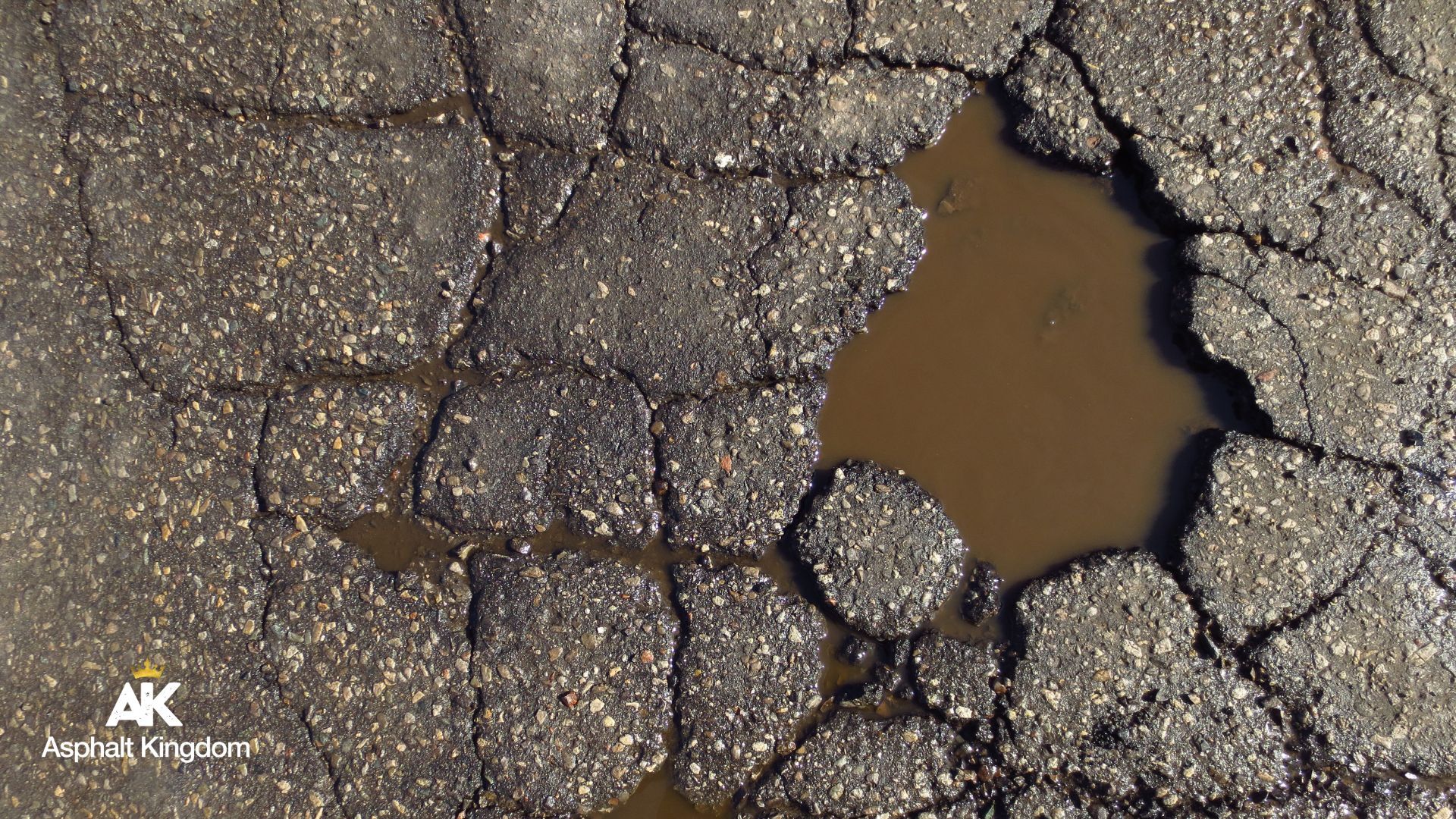If you’re serious about pavement maintenance, you know that asphalt crack repair is one of the most common and cost-effective fixes to keep your blacktop in good shape. But too many contractors and DIYers still make mistakes that cost them time, money, and results. Whether you’re sealing a residential driveway or a busy commercial parking lot, avoiding these mistakes will help you do the job right the first time, boost your profits, and keep customers happy.
Here are the five most common asphalt crack repair mistakes to watch out for — and how to avoid them.
1. Using the Wrong Product for Wide Cracks
When cracks are wider than half an inch, a standard hot pour crack sealer isn’t always enough. These wider gaps can collect water, which leads to bigger problems down the road like potholes or base failure.
If you try to seal a crack that’s too wide with a single pass of hot pour crack sealant, you may not get enough material in to keep water from settling. That’s why you either want to use a patch material or a mastic that can properly bridge and fill the void.
If you must use hot pour sealer, make sure you do multiple passes with your push melter or applicator. Build up the sealant to match the surrounding surface so there’s no channel for water to sneak through. Taking a shortcut here will only lead to callbacks and frustrated clients.
2. Underfilling the Shoe on Your Applicator
-2.jpg?width=720&height=405&name=Blog%20Images%20(23)-2.jpg)
One of the biggest time-wasters in asphalt crack repair is not loading enough sealant into the applicator shoe — that horseshoe-shaped tool that follows the contours of the asphalt.
A lot of contractors barely trickle the crack sealer out, moving painfully slow. This not only extends the job, but also leaves the crew exhausted by day’s end.
Instead, fill up that shoe about three-quarters full. This gives you a steady, reliable flow of crack sealer so you can keep moving without stopping every few feet. Time is money in the crack sealing game, and a properly filled shoe makes you far more efficient.
3. Moving Too Slowly
Let’s be honest: a lot of us treat crack sealing like brain surgery, moving slow and extra careful to “get it perfect.” But that caution can kill your profits.
Crack sealant is designed to go in the cracks — that’s its job. If you tiptoe around every joint and seal so delicately that it triples your job time, you’re leaving money on the table.
Yes, you want a clean, consistent bead of crack sealer. But once you’ve cleaned the cracks and prepped the area, move with confidence. Crack sealing should be quick, methodical, and efficient. The faster you work — while maintaining quality — the more jobs you can complete and the more revenue you’ll make.
Remember: asphalt crack repair is high-volume work, and maximizing your production rate is a huge part of staying profitable.
4. Using Crack Sealer on Alligator Cracks
-3.jpg?width=720&height=405&name=Blog%20Images%20(24)-3.jpg)
One of the biggest slip-ups is trying to use crack sealer on alligator cracks. These spiderweb-like patterns mean the asphalt has structural failure, and filling them with hot pour sealer is a waste of time and material.
When you see these interconnected cracks, think “structural damage,” not “simple crack.” The correct fix here is a surface-level patching solution, like Gator Patch, which is designed to fill and stabilize the weakened asphalt area.
Even better, if you want a more permanent repair, consider infrared patching. Infrared asphalt heaters can warm up the surface, allow you to rake and re-level the area, then compact it down for a seamless, bonded repair that lasts.
Trying to seal alligator cracks with hot pour sealer alone just leaves a mess that won’t hold up. Use the right solution for the right problem.
5. Ignoring Speed and Profitability
Crack sealing is one of the bread-and-butter services in the asphalt maintenance world. But a lot of contractors forget how important speed and efficiency are to their profits.
If you’re spending all day on a single driveway because you’re underfilling the shoe, working too delicately, or applying the wrong product, you’re losing money. Every minute you waste on the job is time you could have spent landing another project.
By keeping your workflow smooth, choosing the right materials, and working at a steady pace, you’ll see your profits climb. Crack sealing doesn’t have to be complicated — it just needs to be done correctly.
Bonus Tips for Better Asphalt Crack Repair Results
Here are a few extra pointers to keep your crack sealing projects running smoothly:
- Always clean the crack thoroughly before sealing. Dirt, vegetation, or moisture will ruin the bond.
- Follow manufacturer specs on temperature and application thickness.
- Make sure your equipment is clean and fully operational before starting each job.
- Train your crew to move with confidence — they should aim for quality, but not perfection paralysis.
Why Asphalt Crack Repair is Worth Doing Right
Asphalt crack repair is one of the highest-return maintenance services out there. By sealing cracks before water and debris break up the pavement, you can extend the life of driveways, roads, and parking lots for years.
Property owners are more than willing to pay for a proactive fix instead of a full replacement later, and they rely on you to get it right. That means using the right products, moving efficiently, and avoiding these five common mistakes every time you head out on a job.
When you approach asphalt crack repair the right way, you build a reputation for professionalism, quality, and speed — the three ingredients that keep customers coming back.
Final thoughts:
Don’t let these simple mistakes steal your time, your profit, or your reputation. Whether you’re a one-person operation or running multiple crews, avoiding these five errors will pay off on every single project. Crack sealing isn’t glamorous, but it’s reliable, repeatable income that can build your business.
Seal with confidence, repair with purpose, and remember — the best crack sealing jobs protect your clients’ investment and protect your bottom line.
-1.jpg?width=720&height=405&name=Blog%20Images%20(22)-1.jpg)



-2.jpg)
